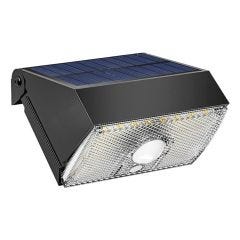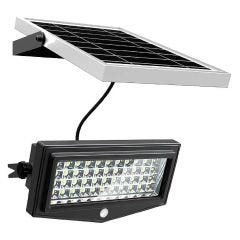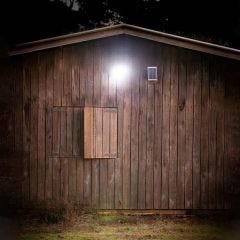Solar Bollard Lights
Solar bollard lights are tall, slender lights that are often used to illuminate pathways, walkways, and driveways. They are typically installed in clusters to create a visually appealing lighting effect. Here are some of their unique features:
- They come in various heights and designs, allowing them to blend seamlessly with any landscape or architectural style.
- They use solar panels to convert sunlight into energy, which is stored in batteries and used to power the lights at night.
- They often have motion sensors that turn the lights on and off automatically when someone walks by, increasing their energy efficiency.
Solar Driveway Lights
Solar driveway lights are designed to provide lighting along driveways, paths, and walkways. They come in various shapes, sizes, and colors, and are often installed in a line along the edges of the driveway. Here are some of their unique features:
- They are designed to withstand harsh outdoor conditions and are often made of durable materials such as stainless steel or aluminum.
- They use solar panels to generate energy during the day and store it in batteries to power the lights at night.
- They are often equipped with LED bulbs, which consume less energy than traditional bulbs and last much longer.
Solar Festoon Lights
Solar festoon lights are decorative lights that are often used for outdoor events, such as weddings, parties, and festivals. They come in various shapes, sizes, and colors and can be strung up in trees, along fences, or around the perimeter of a patio or deck. Here are some of their unique features:
- They are designed to be visually appealing and often come in bright colors or with decorative shapes.
- They use solar panels to generate energy during the day and store it in batteries to power the lights at night.
- They are often equipped with different lighting modes, such as flashing or fading, to create a festive atmosphere.
Solar Post Top Lights
Solar post-top lights are designed to be installed on top of posts, poles, or pillars. They are often used to illuminate pathways, driveways, or outdoor areas such as parks or public spaces. Here are some of their unique features:
- They come in various shapes and sizes and are designed to fit on different types of posts or poles.
- They use solar panels to generate energy during the day and store it in batteries to power the lights at night.
- They are often equipped with motion sensors, which turn the lights on and off automatically to save energy.
Solar Spot Lights
Solar spotlights are designed to highlight specific areas or objects, such as trees, statues, or signs. They are often installed on stakes or spikes, allowing them to be easily moved around and adjusted to different angles. Here are some of their unique features:
- They come in various shapes and sizes, and are designed to be discreet and blend in with their surroundings.
- They use solar panels to generate energy during the day and store it in batteries to power the lights at night.
- They are often equipped with adjustable heads, allowing you to direct the light where you want it.
Solar Wall Lights
Solar wall lights are designed to be mounted on walls or fences to provide illumination. They are often used to light up entrances, driveways, and outdoor areas such as patios, decks, or gardens. Here are some of their unique features:
- They come in various styles and designs, including sconces, lanterns, and floodlights, allowing them to fit in with different architectural styles.
- They use solar panels to generate energy during the day and store it in batteries to power the lights at night.
- They often have motion sensors, which turn the lights on and off automatically when someone approaches, increasing their energy efficiency.








































































